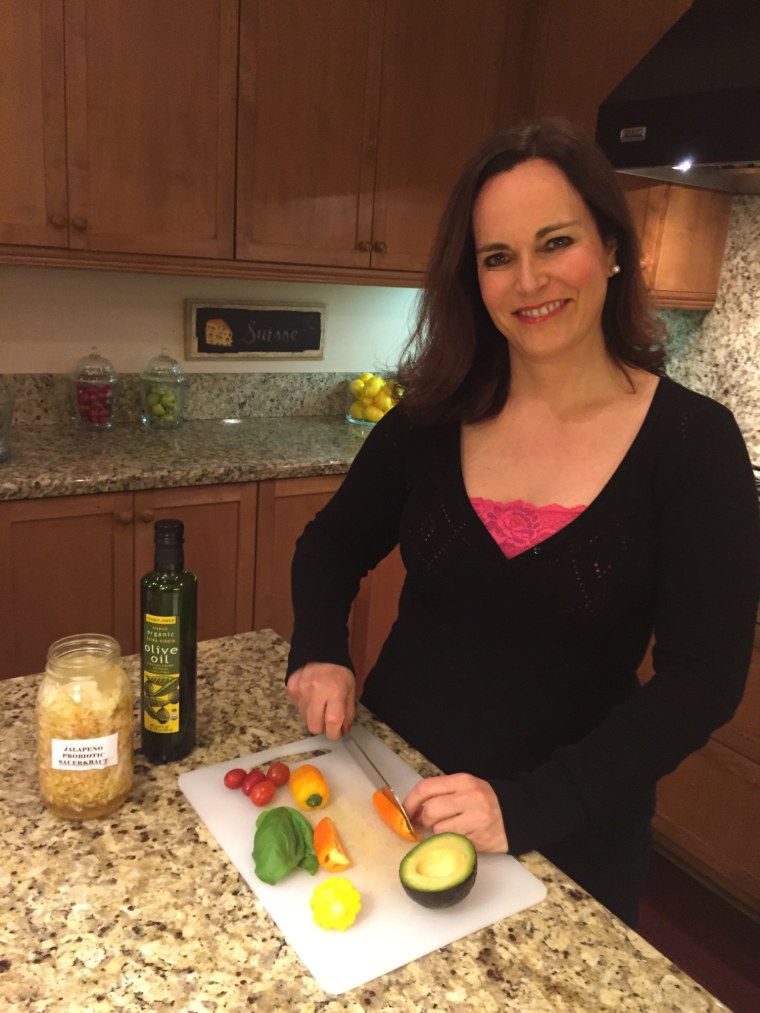The list of what I couldn’t eat was depressingly long: No gluten, no grains, no dairy, no sugar. I could have two alcoholic beverages per week and one square of dark chocolate three nights a week.
“Just try it!” my brother urged as I grimaced at another mish-mash of so-called “clean eating” principles that were supposed to save humanity.

For Christmas, he and my sister-in-law had paid $75 for me to do a 30-day challenge with a company called The 30 Clean. I was to post pics of all my meals in a private Facebook support group in exchange for regular feedback and inspiration.
RELATED: Slim down for summer! 7 simple steps to jump-start your weight loss effort
Clean eating is the hottest nutrition trend around. Basically, it’s avoiding processed stuff in favor of whole foods. But the concept has taken on new life as more people, including entire offices, embrace month-long “challenges.” The number of people doing The 30 Clean has jumped from 60 in 2013 to 1,200 last year. Another popular program called Whole30, which sells cookbooks and an email subscription service, claims the number of #whole30-tagged Instagram photos of people’s plates topped 1 million this year.
There was something alluring about the whole idea. My Facebook feed was full of people who’d bragged about what they’d given up for Lent or how they’d sworn off booze during “Parched March.” I realized I could use some structure to lose a few nagging pounds that had crept up after a knee injury made it hard to exercise over the last year. But the real inspiration was my sister-in-law, who’d been eating clean for months. She positively glowed.
I buckled down and learned how to cook with gobs of ghee and coconut oil (no butter!), mix my own mayo and create delicious non-pasta “zoodles” with zucchini. I spotted the surprising hidden sources of sugar in food. (Oh bacon!)
RELATED: For your health, should you try paleo or Mediterranean diet?
Although I lost only a couple pounds because I was recovering from knee surgery and had to forego cardio, I had more energy, mental clarity and virtually no sugar cravings. I felt so much better that I wondered if I’d had some unknown food intolerance that was causing low-level inflammation all along.

Then on Day 31, the challenge was suddenly over. My Facebook group was shut down, and I was left in the cold holding my squash spiralizer without my supporters “liking” every salad pic I posted. And I felt slightly panicked about re-entering a very dirty world where you had no idea what was in your food. Never mind that I’d been on an easier program; others forbid beans, soy and all alcohol. What did those followers do afterwards?
First, there was the psychological hurdle. It’s not surprising that the language of “clean eating” lends itself to rigid thinking and, if taken to the extreme, can result in “orthorexia,” an increasingly recognized eating disorder affecting 1 percent of the population, according to a recent study. But lead author Thomas Dunn, an associate professor of psychology at the University of Northern Colorado, estimates many more people suffer from it. “It’s not a 30-day challenge that’s a problem,” he says. “It’s a combination of restrictive practices that make some people get carried away.”
RELATED: Blogger reveals how extreme 'clean eating' almost killed her
He tells of one woman who spent so much time cooking that she risked losing her job. Then, there’s another woman whose fiancé broke up with her because she got in fights with restaurant servers demanding to know the ingredient lists for salad dressings.
Even though I became more vigilant at restaurants, my friends still wanted to go out with me. What was harder was figuring out how to eat again. I called Dr. Victoria Maizes, executive director at the University of Arizona Center for Integrative Medicine, who advised thinking of my challenge as a kind of elimination diet, which she considers the clinical “gold standard” to help people detect food intolerances.
RELATED: Eat these 9 foods to boost your metabolism and lose weight
Some estimates say 10 percent of people suffer from such sensitivities (which are different than allergies), and experts aren’t sure why. Maizes suspects we’re becoming more sensitive to changes in the big microbiome, which affect our immune system and can lead to inflammation.
Here’s how these diets traditionally work: You avoid suspected common problematic foods for two weeks. Then you reintroduce one food at a time for two to three days to see if symptoms, such as nausea, gas, cramps, bloating, stomach pain, rashes, diarrhea or headaches return. “Think of it as an experiment,” says Maizes.
I already know I’m gluten-sensitive, so I work on dairy: I add some feta to my salad one day and jack cheese to an omelet. All good.
Then eureka! After eating a grilled fish taco on a corn tortilla at Taco Tuesday, a popular social event in San Diego, I blew up with bloat and felt unusually cranky. Maybe corn was my problem. Even when I didn’t eat popcorn or tortilla chips, I often consumed corn that was in gluten-free flours and or as cornstarch in many sauces.
For me, my experiment in clean eating wasn’t a descent into complete neurotic obsessiveness. It turned out to be tool to figure out how to eat healthier in general by learning more about my body. Plus, all that Facebook love never hurts.
This story was originally published in April 2016. For more diet and fitness advice, sign up for our One Small Thing newsletter.